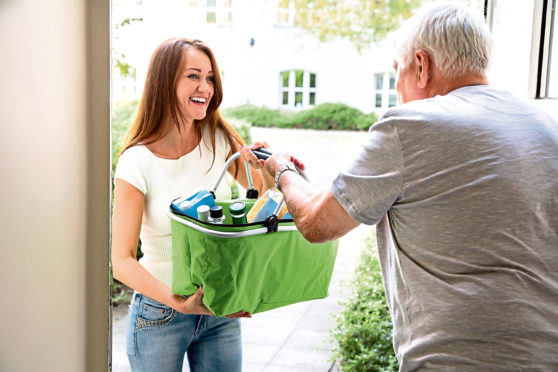
Nine in 10 shoppers claim to be committed bulk-buyers, new research has found. And it’s not just a good deal that’s enticing consumers to stock up.
Across the UK, one in 10 is stockpiling grocery items as a reaction to Brexit and uncertainty over how this will affect prices, according to the research from TopCashback.co.uk.
So far, they have spent an average of £214 on items for “Brexit cupboards”.
The top 10 items people bulk-buy are toilet paper, washing powder, toothpaste, shampoo and conditioner, baked beans, frozen food, soap, pasta, rice and meat, the survey found.
But, for many, bulk-buys can end up going to waste, with 44% admitting they throw away goods they’d stocked up on.
Some say they forget about their purchases, while others failed to use them before they went out of date.
Bulk-buys also end up in the bin because there’s nowhere to store them, the survey of 2,100 people revealed.
Adam Bullock, UK director of TopCashback.co.uk, says: “Bulk-buying is often not as savvy as it seems. Consumers are throwing goods in the bin and money down the drain by stocking up on items they either have no immediate use or space for.”
Keen to stock up? Here are TopCashback.co.uk’s top tips…
Do your maths
Special offer labels can be enticing, but work out the cost per item or per gram to see how much you could save by buying multiple items – it may not be as much as you think.
Set a bulk-buying budget
If you decide to bulk-buy products, make sure you put away a little money each week, so you spread the cost evenly across the year.
Make a list of the items you regularly cook or use
This will stop you being distracted by deals for items you don’t need.
Bulk-buy expensive items
Make a list of the expensive items such as washing powder and razors and look for bulk-buy deals. As you don’t need to buy them every week, you can wait for a good deal before stocking up.
Make more use of the freezer and canned foods
Don’t bulk-buy perishable goods unless you can use them immediately.
Join forces
Pairing up with friends, family or colleagues means you can split the purchase and still end up with the same deal but without a large amount of stock to store at home.
Check how much storage space you have before going shopping
A lack of space could result in having to throw items away to make room for new purchases.
Shop big
Buy from wholesalers and discount stores, who may have great deals.
Make note
Keep a note of sell-by-dates on items and make sure you are using products before buying more.

Enjoy the convenience of having The Sunday Post delivered as a digital ePaper straight to your smartphone, tablet or computer.
Subscribe for only £5.49 a month and enjoy all the benefits of the printed paper as a digital replica.
Subscribe